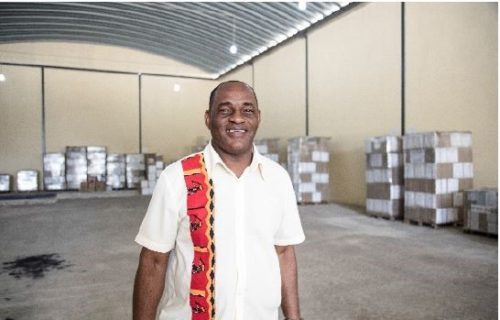Since printing the 500 different book titles, Vamos Ler! has distributed 10 million books to 1,950 schools in rural areas in Nampula and ZambeziaNampula, MozambiqueLa población mozambiqueña habla más de cuarenta idiomas indígenas, y 85 El porcentaje de la población del país habla Emakhuwa, Echuwabo y Elomwe. Pero el portugués es el idioma oficial de Mozambique y sigue siendo el idioma de instrucción en la mayoría de las escuelas mozambícanas, A pesar de eso menos que 3 El porcentaje de la gente de Mozambique habla portugués como primer idioma.
La mayoría de los niños de primaria tienen dificultades para desarrollar habilidades de lectura porque el plan de estudios escolar y los libros para niños están escritos en portugués. Sin embargo, La investigación científica muestra que los niños aprenden mejor cuando se enseñan en su primer idioma.
La disponibilidad limitada de recursos de enseñanza y aprendizaje escritos en idiomas mozambiqueños indígenas a menudo se cita como una de las barreras para implementar la educación bilingüe en las escuelas de todo el país..
Producir materiales de enseñanza y aprendizaje en idiomas locales
Desde 2016, USAID-funded Vamos Ler!/leamos, un programa de alfabetización bilingüe de grado temprano de cinco años que busca mejorar 800,000 Habilidades de lectura y escritura de los estudiantes en asociación con el Ministerio de Educación y Desarrollo Humano de Mozambique (Mina), ha apoyado al gobierno de Mozambique para desarrollar materiales de enseñanza y aprendizaje en los tres idiomas más hablados., En Makhuwa, empuja, y Elomwe.

"Para expandir el sistema educativo bilingüe en el país, Uno de los puntos de partida clave fue el proceso de desarrollo de material.. Hubo una escasez general de materiales de aprendizaje en idiomas locales., Una realidad que está cambiando gracias a programas como USAID Vamos Ler!,"Explica, Dr. Telesfer de Jesús, el director nacional de educación primaria.
En los últimos cinco años, leamos! ha trabajado de la mano con el ministerio sobre el desarrollo de cientos de materiales de lectura y aprendizaje escritos en los tres idiomas y portugueses para el grado. 1 a través de grado 4 estudiantes y profesores. Los materiales incluyen libros para estudiantes, manuales de maestros, Planes de lecciones con guiones, pósters, gráficos de alfabeto, y libros de cuentos.
"Cuando comenzamos este viaje, Ninguno de nosotros podría haber imaginado que en un corto período de tiempo logramos desarrollar tantos libros., cerca de 500 títulos. Es un logro asombroso. Es un gran legado para el país.," dice el Dr.. de jesus.
Mucha gente participó en el proceso de elaboración de estos materiales..
El proceso de escritura de libros para cada nivel de grado siempre comenzaba con la revisión de los materiales existentes y la búsqueda de historias locales.. Entonces, hubo una serie de talleres para que los participantes crearan nuevos títulos de forma colaborativa, incluidos los profesores, autores locales, especialistas multilingües, diseñadores gráficos, ilustradores, y especialistas del Ministerio y Vamos Ler!.
Aceptación de la comunidad desde el principio
El programa buscó comentarios de la comunidad durante el proceso de desarrollo del libro porque la participación de la comunidad y los padres es esencial para el éxito del programa..
Todos los libros fueron probados en el campo con maestros., padres/tutores, niños y líderes comunitarios para verificar que los textos e imágenes se correlacionaran y lo más importante para confirmar que los libros reflejan la cultura y el contexto locales..
“El programa trajo muchas innovaciones metodológicas en el desarrollo de los libros que nosotros como Minedh vamos a seguir usando. Llevar los libros a la comunidad para probar antes de ser entregados a la escuela fue un paso importante; Pudimos ver el entusiasmo de los padres y líderes de la comunidad., ya que tienen un dicho sobre lo que se les enseñará a sus hijos," dice el Dr.. de jesus.
Desde que se desarrolló casi 500 títulos diferentes, leamos! ha impreso y distribuido más de 10 millones de materiales de enseñanza y aprendizaje para 1,950 Escuelas en áreas rurales en Nampula y Zambezia.
Sin duda, el programa ha causado una gran impresión en la educación de Mozambique al crear el primer gran programa de alfabetización bilingüe del país., así como distribuir en una proporción de uno a uno para que cada estudiante tenga un libro que refleje la cultura local..